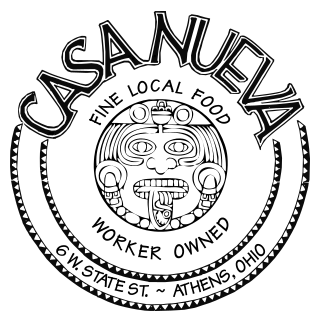Click on the links below to learn more!
Are there different types of co-ops?
Yes! There are three broad categories of cooperatives – worker cooperatives, consumer cooperatives, and marketing cooperatives.
A. Worker Cooperatives are cooperatives in which the members have joined together to produce goods and/or services for sale. The workers, being the only members of the cooperative, elect the Board of Directors and share whatever profits are earned by the business.
B. Consumer Cooperatives are cooperatives whose members have joined together in order to purchase goods and/or services. The most familiar consumer cooperatives are those established to provide food and housing. Credit unions are specialized cooperatives, designed for the banking industry.
C. Marketing Cooperatives are cooperatives whose members are privately owned businesses or individual business people who join together to sell their products or services collectively. These cooperatives range in size from a storefront craft cooperative to the large agricultural marketing cooperatives like Oceanspray.
Are worker co-ops a new form of cooperative?
No! Worker cooperatives have been in operation since the late 1700’s. The movement started in the British Isles but soon spread to other parts of Europe and to the United States. Today you will find cooperatives operating successfully throughout Europe, Scandinavia, and the Americas. In the Mondragon region in Spain a complex of seventy-six co-ops is in operation with over 15,000 members. In the United States the most successful worker cooperatives are found in the Pacific Northwest where eighteen cooperatively owned companies supply eight percent of the nation’s plywood.
Is there a relationship between worker cooperatives and the union movement?
During the early days of the American labor movement, there was a very close relationship. For example, by the 1880’s over one hundred cooperatives had been established by the Order of the Knights of Labor. At one point in the 1880’s the national membership of the Knights voted to reserve 60 percent of its money for starting cooperatives, 30 percent for a strike fund and 10 percent for education. Since the turn of the century the American labor movement has concentrated on improving the working conditions in privately owned companies.
How do worker cooperatives get started?
There are at least three sets of circumstances looked upon as favorable for the establishment of worker cooperatives – start-ups, conversions, and plant closings.
A. A start-up is a business situation where a group of workers decide to start a business together.
B. A conversion is one in which the owner of a healthy company decides to sell the business to the workers.
C. Plant closings refer to the situation where a conglomerate has closed a viable company for reasons other than financial potential.
How do worker cooperatives get their financing?
There are at least 6 ways that cooperatives raise money:
A. Membership fees. Worker/members will usually have to invest capital in the form of membership fees to start the business. As new worker/members join the firm they pay an equal amount or percentage as a membership fee. Payments are sometimes made through payroll deductions. When a worker retires from the firm, the membership fee is returned, assuming the company has been profitable.
B. Reinvestment of Profits. Each year the cooperative must decide what to do with the money that is left after payment of expenses. Given the need for capital, particularly in the first years of the business, the majority of the surplus will probably be reinvested in the business in order to promote steady, healthy growth of the company. All reinvested funds will be allocated to the internal accounts of the members on the basis of patronage, and eventually it will be paid out to members.
C. National Cooperative Bank and the National Cooperative Bank Development Corporation both provide debt and equity financing to worker cooperatives and ESOP’s.
D. Commercial Banks. Cooperatives can also sometimes borrow from commercial banks.
E. Specialized Community Development Funds. Some state and local governments have established funds for the development of businesses that are more broadly owned than the normal business corporations. These “community development funds” often have guidelines, which make their use by worker cooperatives possible.
F. Churches, Foundations and Other Private Groups. These organizations often devote a portion of their funds to community economic development, and usually view worker cooperatives as eligible for funding, particularly through their loan funds. Examples of such groups are the Industrial Cooperative Association, the North Court Development Fund, the Campaign for Human Development, and the Cooperative Assistance Fund.
If the cooperative fails financially, are the workers personally responsible for its debts?
No. In such a situation the workers would lose their membership fee and any profits accumulated in their internal accounts. However, there is no additional financial liability.
